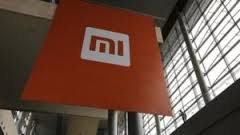Time was when an importer had to fork out as much as 220% customs duty and individuals were made to pay up to 97% income tax. The Indian tax system has undergone a sea change since then and the passage of the GST Bill by the Rajya Sabha on Wednesday capped the struggle of successive governments for a tax regime that is globally competitive and economically gainful.
From an abysmal level of less than 5% in 1960s, the country’s tax-to-GDP ratio rose to an all-time high of 11.89% in 2007-08 and stood at 10.7% in the last fiscal. While it’s still less than the 18-19% in some developed nations, the proposed GST regime promises to change it for the better. And as India gears up to embrace this regime, a look at the evolution of its tax system over the years suggests there are plenty that can be looked at with optimism.
One of the country’s most important indirect tax reforms started in one of its darkest hours, by one of its most eminent economist-finance ministers. In 1991, when the country was on the cusp of a balance of payment crisis, Manmohan Singh presented his “epochal budget”, drastically cutting the peak customs duty from 220% to 150%. He offered tax concessions for software exports and set up a commission under Raja Chelliah to suggest tax reforms.
He announced: “The time has come to expose Indian industry to competition from abroad… As a first step in this direction, the government has introduced changes in import-export policy, aimed at a reduction of import licensing, vigorous export promotion and optimal import compression.” The country’s peak customs duty now stands at 13.5%; for non-agricultural goods, the peak customs duty is even lower, at 10%.
While the steady reduction in the customs duties since 1991-92 forced the domestic industry to improve their competitiveness, the tax concessions announced by Singh led to the emergence of global IT giants like TCS, Infosys and Wipro. Even Chelliah, who later suggested broadening the tax base and levying lower and less differentiated rates, came to be called by some “the father of India’s tax reforms”.
In 1994, Singh also introduced a service tax (5%) on three services—telephone bills, non-life insurance and tax brokerage—seeking to cash in on the fast-growing services segment, which was making up for some 40% of the country’s economy. The service tax base and rates were steadily raised over the years. It’s no wonder that the service tax collection rose from a paltry R400 crore in 1994-95 to R2,10,000 crore in the last fiscal.
In 2000, the then finance minister Yashwant Sinha effected major rationalisation in the excise duty structure to introduce a single Cenvat rate of 16%. In 2004, with the integration of service tax with the Cenvat chain government sought to reduce the cascading effect of indirect taxes on ultimate consumer of goods and services. In 2005, the value-added tax regime kicked in, as the government decided to rationalise the sales tax system.






